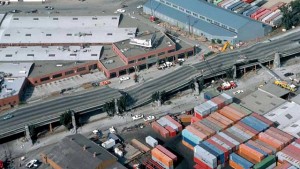
Earlier this week, State Senator Alex Padilla went before the cameras with a group of earthquake scientists to kick-start California into building the world's best earthquake early-warning system. Does such a thing really work? And why should we start now?
Early-warning systems are not a scientific boondoggle; they really work. First things first, though: these do not predict earthquakes. Instead, they're automatic systems that detect quakes right at the epicenter, and measure their size almost instantly. With that information, they signal faraway users that strong shaking is on its way RIGHT NOW. You could call that a prediction if you like, an instant shaking prediction. But quake researchers are extremely allergic to the word "prediction," so please call these warning systems. They're like the tsunami warning systems we're familiar with by now, only a lot faster.
The Bay Area had the world's first example back in 1989, in the aftermath of the Loma Prieta earthquake. It detected aftershocks. It consisted of a handful of seismographs around the epicenter in the Santa Cruz Mountains, a computer and a microwave radio network. When the computer got enough simultaneous signals from the seismographs, it considered that the detection of a large aftershock and sent out an alarm on the radio network. Crews who were taking down the wreckage of the Cypress Structure, 100 kilometers away, got about 20 seconds of warning to back off and get out. You can imagine how useful that system was to those workers, crude as it was.
Today much larger and better systems are at work around the world. Japan's is the most advanced—not so much scientifically, because every system's software uses the latest science, but in terms of being integrated into people's lives. If you saw it in action during the 2011 Tohoku earthquake, you can imagine one like it in California.
Senator Padilla's bill was triggered after one of his regular visits to Caltech. (He's an astronomy geek, it turns out.) While he was there, the earthquake people got hold of him and demonstrated the early-warning tools on the California Integrated Seismic Network (CISN), like the experimental ElarmS project. The CISN people told him, as they've been telling anyone who will listen for ten years now, that they're ready to roll whenever the money can be found. Right now their research relies on a lean stream of funds from government projects and the Gordon and Betty Moore Foundation.